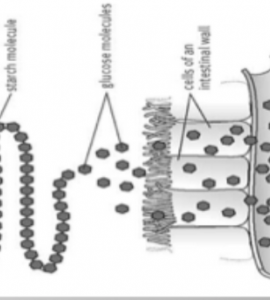
Original author
Resource type
Content area
Use type
Tools
Tags
In this activity, we will follow the path of glucose from the digestive system into the bloodstream. Glucose is a type of sugar and an important energy source that is needed by the body’s cells. Carbohydrates such as fruit, bread, and pasta are common sources of glucose. These foods are broken down into glucose, which is then absorbed from the digestive system into the bloodstream and distributed to the rest of the body. As part of the digestive process, the glucose molecules from the food you eat are dissolved into the liquid contents of the small intestine. These glucose molecules (like all molecules) are always moving.
A consequence of this constant random movement is diffusion, or the tendency of molecules to spread into an available space. If there are no outside forces acting on them, molecules will diffuse from areas that are more crowded (areas of higher concentration, or more molecules) to areas that are less crowded (areas of lower concentration, or less molecules). This movement pattern is described as ‘moving down a concentration gradient.’
Have you ever drank a can of soda and suddenly felt more energetic? In this Biograph Virtual Lab, you will use a simulation to explore how the glucose molecules from the soda move from the lumen of your small intestine, across the membranes of your epithelial cells, and into your bloodstream. (Ultimately, the glucose in your bloodstream will move into your body’s cells).
Log in or register to view attachments and related links, and/or join the discussion
